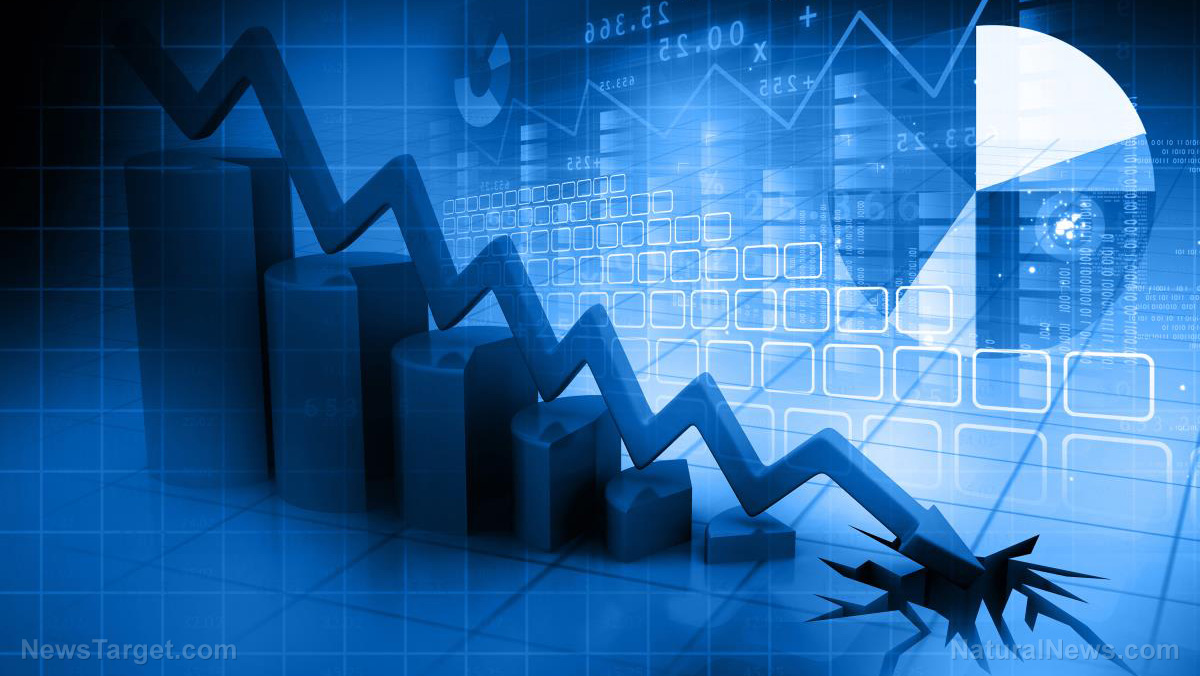 Parler
Parler Gab
Gab
- Germany saw 11,900 corporate bankruptcies in the first half of 2025, a 9.4% year-on-year increase.
- Rising costs, weak demand and trade uncertainties exacerbated the crisis, with 141,000 jobs at risk.
- US-EU tariff disputes and export pessimism have worsened outlook for German manufacturers.
- Experts warn of “chain reactions” from insolvencies, prolonging the two-year recession.
- Germany’s June Ifo index fell as trade tensions with the U.S., its largest trade partner, persist.
Structural weaknesses and global headwinds compound the crisis
Germany’s industrial sector, long a pillar of its economy, is buckling under declining orders and strained supply chains. Slumping global demand has shrunk export sales — a lifeline for Germany’s manufacturing-heavy industry — amplifying the damage from domestic price surges. “Companies are struggling with weak demand, rising costs and persistent uncertainty,” Hantzsch said, noting that eroding financial reserves and tighter lending conditions have left many unable to weather the storm. Historically, corporate bankruptcies in Germany peaked during the 2008 financial crisis and again in 2012, amid the eurozone debt crisis. The current surge, however, is unique in its alignment with both structural flaws in Germany’s industrial model — such as reliance on aging sectors like autos — and external threats like U.S. tariffs. The Ifo export expectations index for manufacturers sank to -7.4 in June, its lowest since 2019, signaling fears that trade tensions with Washington could escalate into a full-scale trade war.Trade war fears weigh heavily on Germany’s largest trade partner
The U.S., Germany’s largest trading partner (€253 billion in goods in 2024), has emerged as a key vulnerability. President Trump’s 2024 tariffs on EU goods — 20% across the board, with 25% on steel, aluminum and autos — remain a Sword of Damocles. While negotiations delayed some sanctions, base tariffs persist, clouding exporters’ outlooks. Wohlrabe emphasized the unresolved nature of the dispute: “Tariff threats from the U.S. are still on the table. An agreement between the EU and U.S. has yet to be reached.” The stalemate has dampened confidence, pushing the Ifo export expectations index down further month-on-month. “Uncertainty is killing investment and hiring decisions,” he said, warning of long-term damage to Germany’s competitive position.A road to recovery? Experts remain skeptical
Despite a slight GDP uptick in early 2025, Creditreform’s Hantzsch cautioned that the recession’s grip remains unbroken. “Germany is mired in a deep economic and structural crisis,” he said, stressing that insolvency risks will likely persist into 2026. Ifo’s Wohlrabe echoed this pessimism: “The chain reactions from collapsing firms could deepen the downturn.” Analysts argue that without reforms to streamline industries and stabilize trade relations, the crisis could outlast hopes of a rebound. “This isn’t just about tariffs — it’s about rebuilding competitiveness in a global economy where old models are failing,” one economist noted, citing digitalization gaps and climate-related transitions as unaddressed challenges.“The writing on the wall”: A dire warning for German industry
As corporate bankruptcies hit a decade-long peak, Germany confronts an uncomfortable truth: its economic legacy is eroding under competing domestic and global pressures. With trade uncertainties unresolved and costs soaring, the prospect of a swift recovery dwindles. For now, the nation’s business leaders face a stark choice — adapt, or risk becoming another statistic in a deepening spiral. Sources for this article include: RT.com MENFN.com Reuters.comTRAITORS: Former USAID staffers organize resistance against Trump administration
By Ramon Tomey // Share
Epstein files scandal erupts as Trump administration accused of cover-up; MAGA base revolts
By Finn Heartley // Share
Trump puts “heavy pressure” on Netanyahu to end Gaza war as ceasefire talks stall
By Cassie B. // Share
BRICS nations accelerate push to decouple from U.S. dollar amid sanctions concerns
By Willow Tohi // Share
Governments continue to obscure COVID-19 vaccine data amid rising concerns over excess deaths
By patricklewis // Share
Tech giant Microsoft backs EXTINCTION with its support of carbon capture programs
By ramontomeydw // Share
Germany to resume arms exports to Israel despite repeated ceasefire violations
By isabelle // Share










